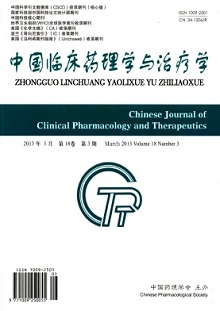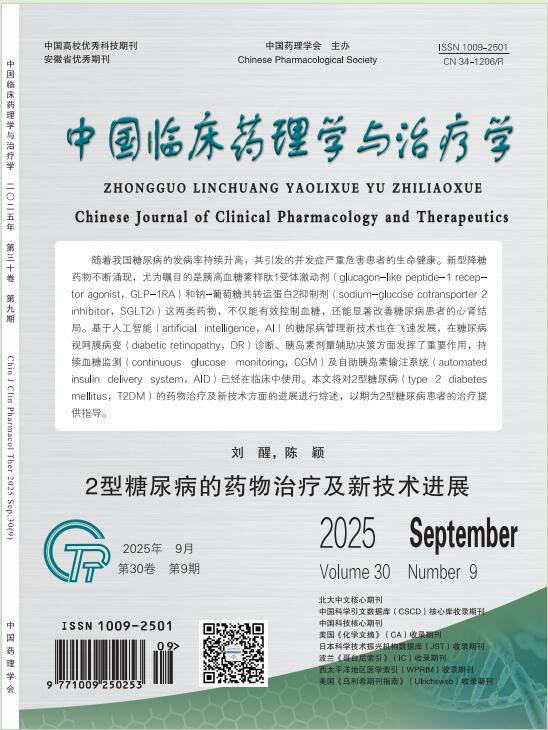Pharmacokinetics of Alvimopan capsules in healthy Chinese volunteers
LI Xiao, GUO Xin, LIU Zhi, YU Peng, MA Yue-hui, CHENG Ze-neng
2013, 18(3):
290-296.
 Asbtract
(
348 )
Asbtract
(
348 )
 PDF (628KB)
(
558
)
References |
Related Articles |
Metrics
PDF (628KB)
(
558
)
References |
Related Articles |
Metrics
AIM: To study the pharmacokinetics of Alvimopan and its metabolite ADL 08-0011 in Chinese healthy volunteers after single and multiple oral administrations of Alvimopan capsules.METHODS: This study contains 24 healthy adult subjects totally. 12 healthy adult subjects (6 males, 6 females) were randomly grouped by 3×3 Latin square. Three single doses of Alvimopan capsules, 6 mg, 12 mg, 18 mg, were given to each group at each period to make each group take each dose once after three periods. After three periods, the 12 subjects were given multiple doses of Alvimopan capsules at 12 mg (bid) for 6 days.The resting 12 subjects were given single highest dose of 24 mg. The plasma concentrations of Alvimopan and ADL08-0011 were measured by a validated LC-MS/MS method and the pharmacokinetic parameters were calculated using WinNonlin 6.1.RESULTS: The linear range of Alvimopan was 0.192-75 μg/L(r=0.9986). Results of methodology validation-specificity, precision,accuracy and average recovery-fit the requirements of sample determination. The main pharmacokinetic parameters of Alvimopan after single dose administration (6, 12, 18 and 24 mg) were Cmax: (8.79±6.10), (18.30±9.92), (31.48±13.68) and (32.91±17.95) μg/L; Tmax: (1.4±0.6), (1.8±0.6), (1.8±0.6) and(2.1±0.6) h; AUClast:(33.2±23.0), (60.3±28.9), (94.1±42.2) and (112.0±57.5)μg·h·L-1; t1/2: (8.4±4.9), (8.4±5.3), (7.9±4.8) and (10.0±4.3) h; CL/F: (218.1±111.8), (234.7±135.7), (217.6±95.3) and (256.9±132.5) L/h. Multiple administration (12 mg bid)pharmacokinetic parameters were: Cmax: (16.57±10.15) μg/L, Tmax : (1.6±1.0) h, AUClast: (64.4±32.0) μg·h·L-1, t1/2 : (12.0±3.3) h and CL/F (258.4±109.4) L/h.CONCLUSION: Determination method is convenient, sensitive and suitable for the pharmacokinetics investigation. The pharmacokinetics of Alvimopan in Chinese healthy volunteers exhibits linear behavior in dose range of 6 - 18 mg. But pharmacokinetic nonlinearity was observed when dose up to 24 mg.


